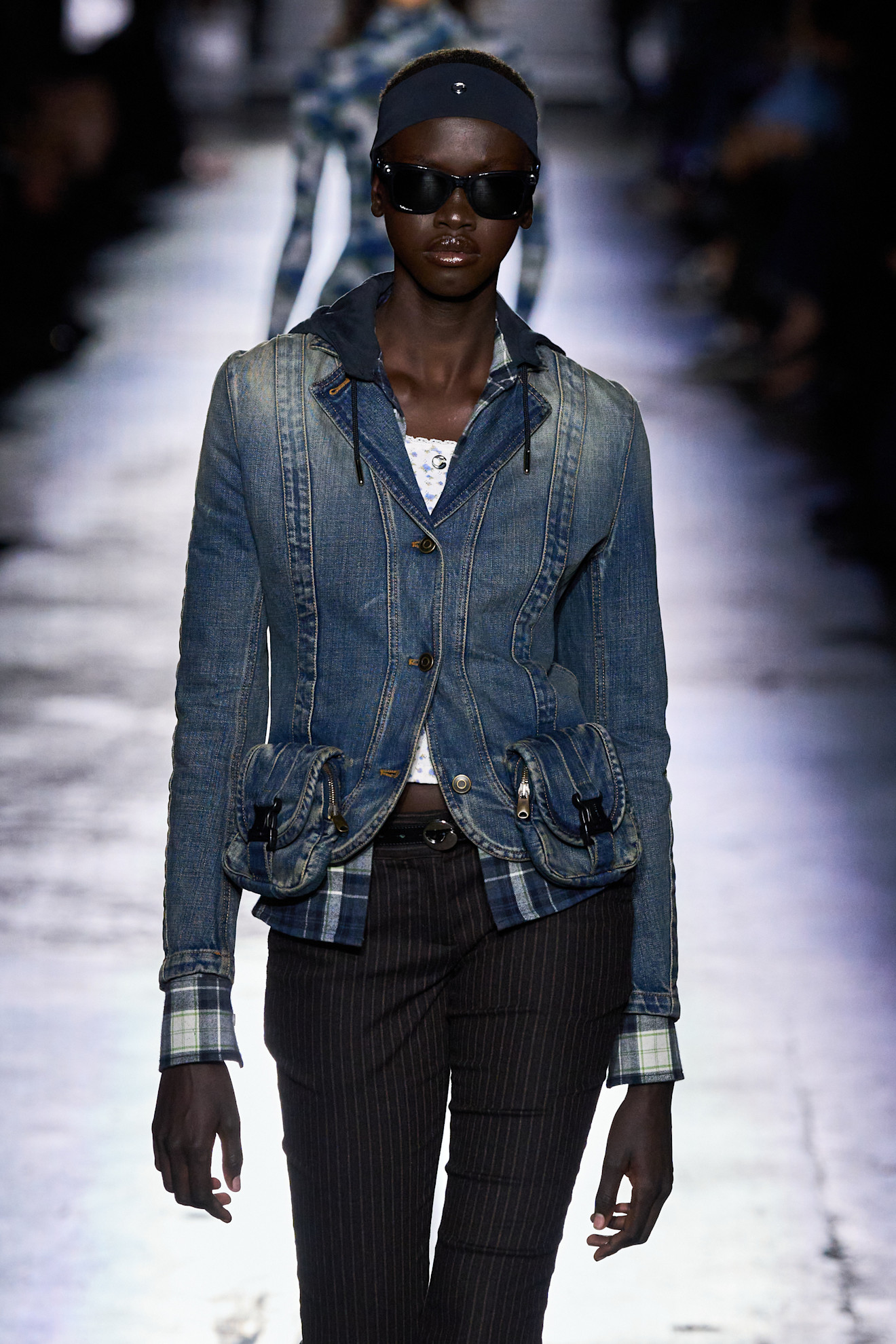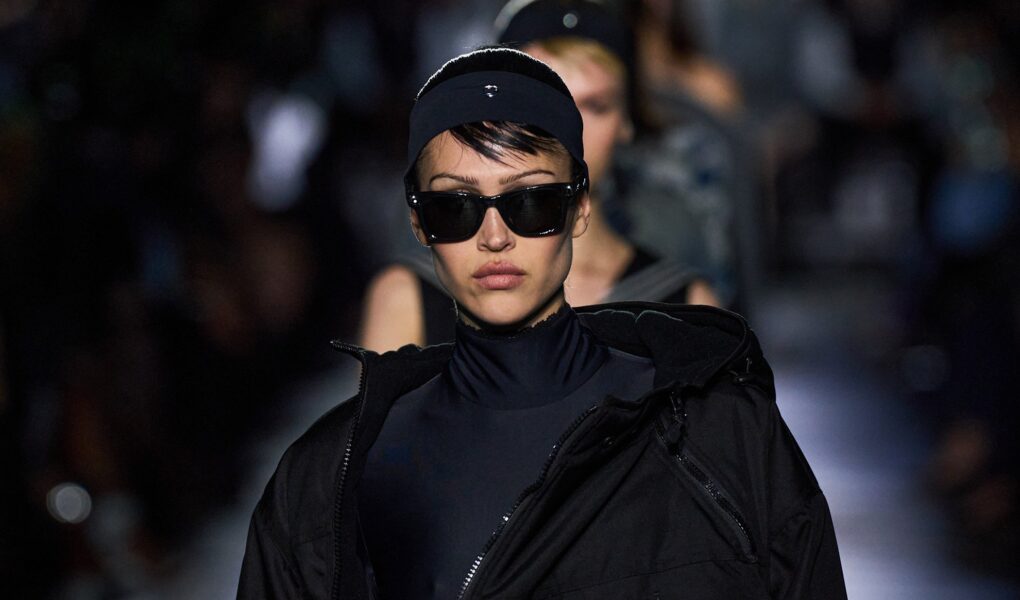Views: 70
A man named Andrea is speaking to me in Italian, but I hear English in my ears. I respond in English, and an Italian transcription appears on the phone screen he’s holding. We go on for a few minutes like this—back and forth in our respective languages—as he tells me about the new technology that makes this unlikely interaction possible, thanks to the AI glasses I’m wearing. We’re at a showroom in Milan, but we might as well be sitting on my living room couch in Toronto, because any semblance of a language barrier has melted away. The feature is the latest result of Meta’s partnership with EssilorLuxottica, the eyewear giant behind some of the most coveted luxury frames on the market. (Think: Miu Miu, Burberry, Diesel.) Runway-worthy designs are their bread and butter, but these days, it’s their tech-y offerings—AI glasses with Ray-Ban and, most recently, Oakley—that have turned heads in fashion and wellness spaces. The first Ray-Ban Meta glasses, released in 2021, were successful in part because they brought something rare to the category: aesthetic appeal. “There are many tech glasses around, but none of them look stylish,” says Maristella Rizzo, Global Category and Brand Senior Manager for Ray-Ban Meta. “[Our glasses’] key selling point is that they are not only high-tech, they’re also fashionable.” Rizzo shows me the popular square-shaped Wayfarer model and the sleeker Skyler cat-eye, which look like regular glasses, save for the subtle cameras near the hinges. Like any good eyewear offering, they come in Transitions—tinted lenses that darken in sunlight—in trending hues like amethyst and blue sapphire. They’ve been endorsed by celebrity It couple Dylan Sprouse and Barbara Palvin and, most recently, they’ve entered the world of luxury via Coperni’s Fall 2025 collection.

Coperni Fall 2025, photography via Launchmetrics/spotlight
Still, the fashion-ification of tech-forward eyewear is an ongoing process. “It’s always a compromise between the weight of the glasses and what the glasses can deliver in the design,” Rizzo explains. But their execution is working: when I chat with Rocco Basilico, Chief Wearables Officer at EssilorLuxottica, he says that the Ray-Ban Meta glasses have tripled in sales over the last year. It’s perhaps no coincidence that, right now, fashion is influenced by futuristic devices. “One thing that’s inspiring us is the idea of tech disruption,” says Nina Esteves, EssilorLuxottica’s Trend & Foresight Manager. Data-based style predictions are her specialty, and when I visit her earlier in the day, she notes that many of the top eyewear trends for Fall 2025 reference AI and otherworldly tech. This season, for instance, chrome will be big, seen in experimental metals and fluid temple lines. “Alien eyes” are also on the rise, including buggy frames with distorted arms. Rizzo notes that, to keep up with consumer demand, they’ve created transparent AI glasses: clear models that show off the wiring and hardware, from microphones and speakers to SIM cards. But the intrigue around innovative eyewear is more than just about style—it’s about wellness. When I chat with Basilico, this is what he’s eager to emphasize. “The future of eyewear as an enabler, predictor and promoter of health and wellness is paramount for us,” he tells me. He cites the Be My Eyes feature—a tool where visually impaired people can connect with virtual volunteers, who receive a livestream of the glasses’ view and talk the wearer through situations. “The feedback we’ve gotten from the blind community is overwhelming,” he continues. “At the same time, we’ve barely hit the tip of the iceberg.” Going forward, he says their smart eyewear could include retina exams to detect conditions like diabetes and monitor health in real-time. There’s also an accessibility feature in testing stages called AI Assistant. This update can process what you’re looking at and respond to an ask, whether that’s telling you what ingredients to get from the pasta aisle or helping you find your car in a parking lot. “It can really guide you through a process,” says Rizzo. It’s not hard to see how all of this could instantly make life, well, easier. When I bid Andrea adieu and take off my glasses, I’m only able to communicate through the shaky “grazie” I mutter with hesitation. I wonder what it would be like if every conversation could go as smoothly as ours just had—every barrier broken with the addition of an accessory. If this is in fact the ultimate lifestyle improvement, it’s not really about sight or even speech. It’s about understanding. This seems to be the mission here: while no official plans have been announced for further AI glasses releases, Rizzo notes that “the long-term objective is to make it as mainstream as possible.” It’s a bit ironic, since “mainstream” health-focused movements often feel out of reach—be it through Goop-y far-off retreats or expensive experimental treatments. Accessibility, however? That’s a breakthrough the wellness world could use. Continue Reading



